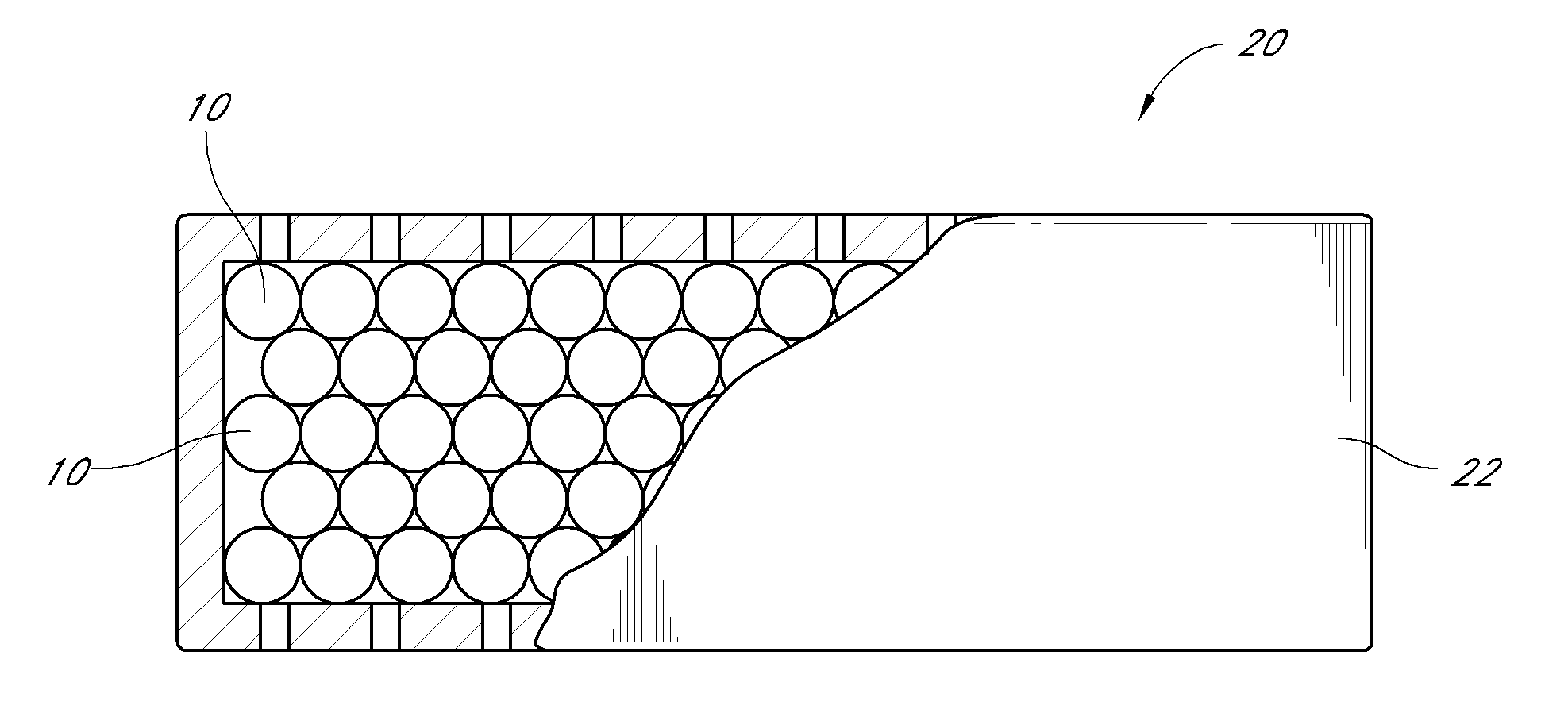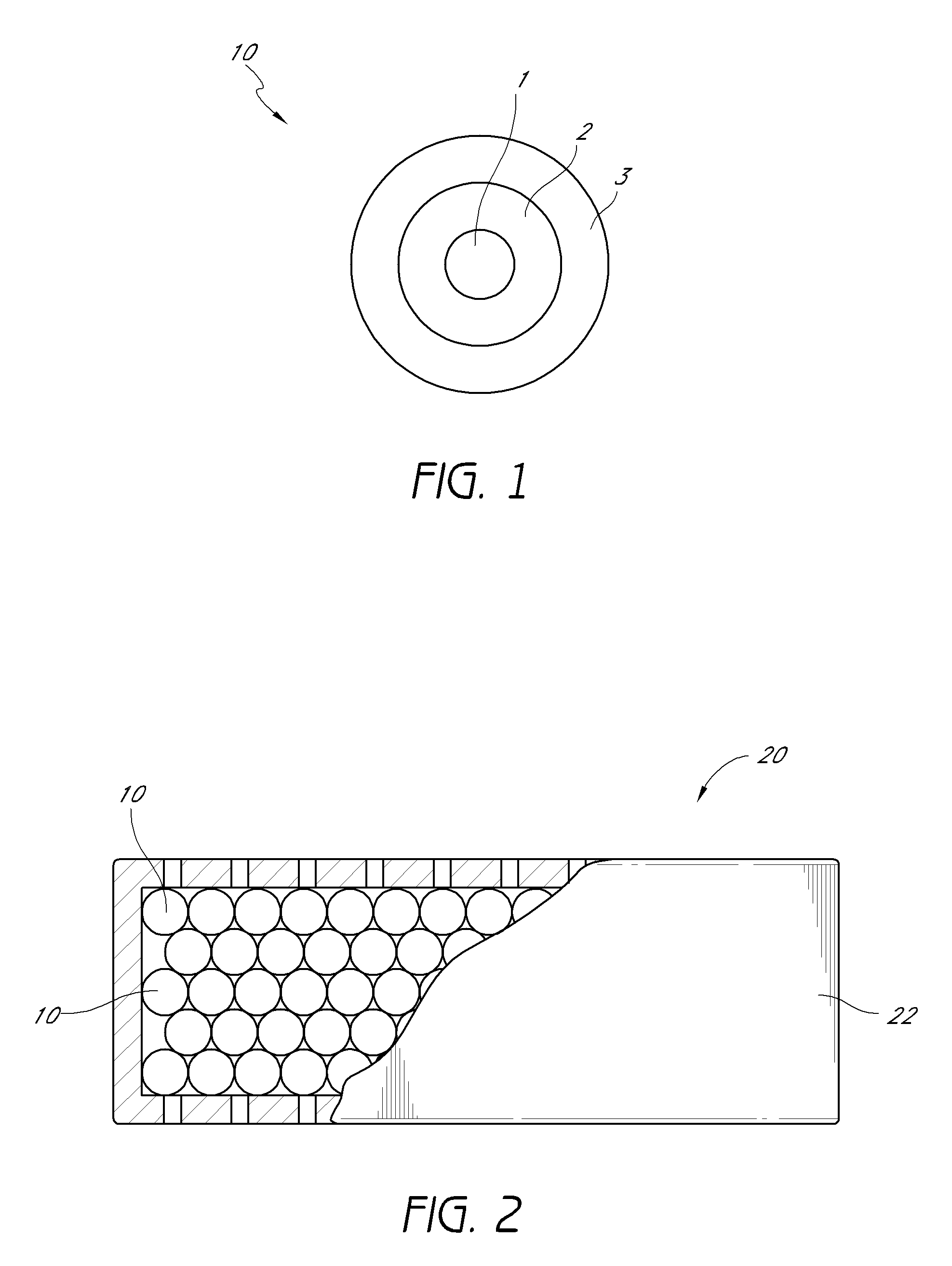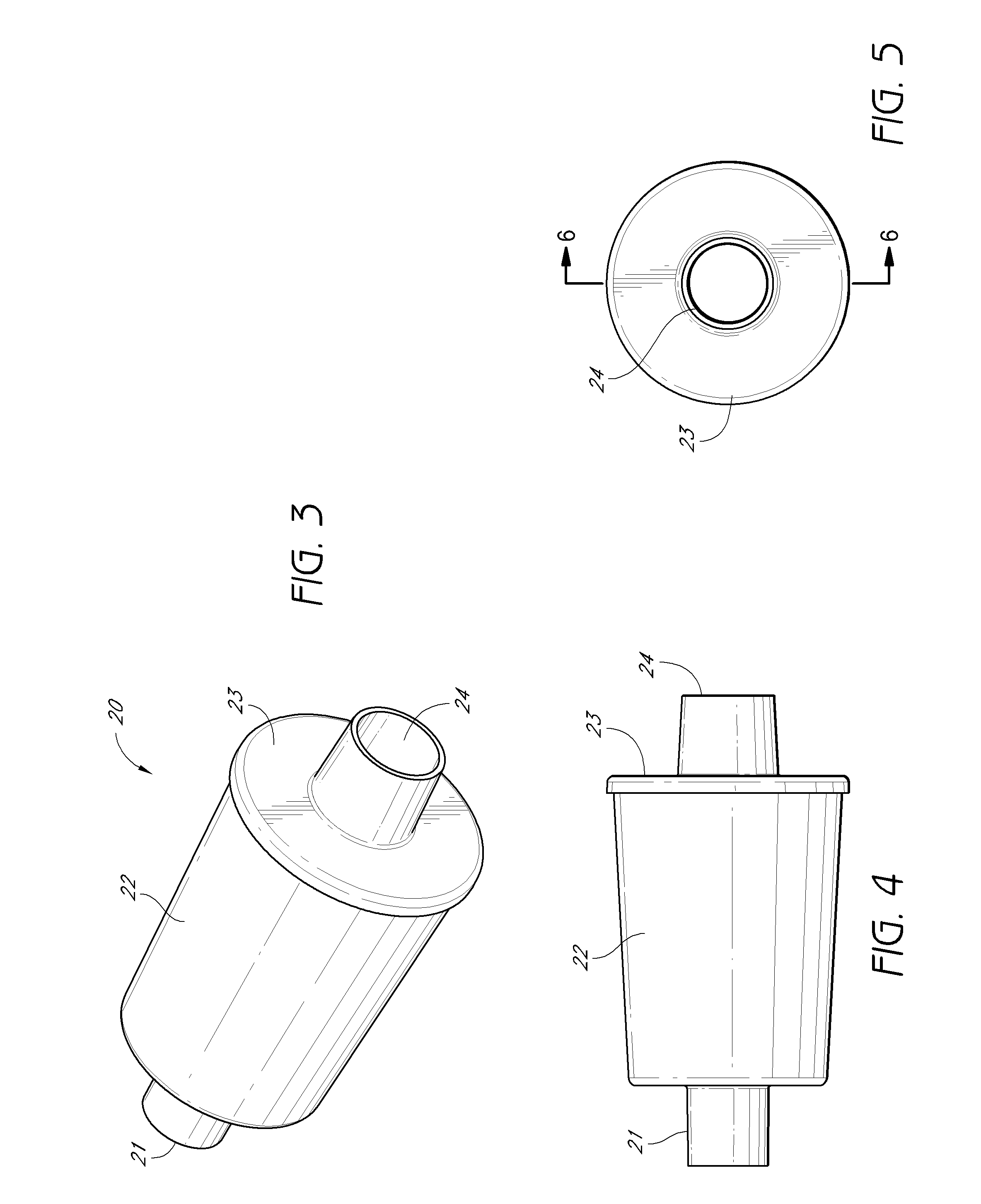Activated carbon systems for facilitating use of dimethyl sulfoxide (DMSO) by removal of same, related compounds, or associated odors
a technology of activated carbon and dimethyl sulfoxide, which is applied in the direction of respirators, respiratory masks, separation processes, etc., can solve the problems of reducing the effectiveness and receptivity of medical staff, affecting the effect of pressure variation, and causing additional damage to the brain
- Summary
- Abstract
- Description
- Claims
- Application Information
AI Technical Summary
Benefits of technology
Problems solved by technology
Method used
Image
Examples
example 1
Test Lung-Square Function
[0275]Using a test-lung, one embodiment of the experimental breathing system was set up according to the parameters listed in FIG. 15, using a Square function breathing simulation. In some of the experiments the downstream configuration 50 and upstream configuration 52 terms are used to describe the placement of the filter 20. In one embodiment, the downstream configuration 50 placement refers to the filter 20 being placed downstream in a fluidly connected breathing system, more distal from the subject than any HEPA filter, heat sink, water trap, or other accessory in breathing system. In one embodiment, the upstream configuration 52 placement refers to the filter 20 being placed upstream, or more proximal to the subject with respect to accessories. In one embodiment of the testing, the data showed no significant changes in maximum pressure (P(max)), mean pressure (P(mean)), or Positive end-expiratory pressure (PEEP) when the filter 20 was placed in the down...
example 2
Test Lung-Ramp Function
[0276]One embodiment of the experimental breathing system test reflected at FIG. 16 was similar to the previous test reflected at FIG. 15, with one difference being the breathing function selected to the Ramp Function, rather than the Square function. Again, no significant difference was noted with the embodiment of the filter 20 in the downstream configuration 50 location. The mean pressure increased very slightly, but the maximum pressure and PEEP either stayed constant or decreased during the testing. The increase in pressure was more notable when an embodiment of the filter 20 was placed at the upstream configuration 52.
example 3
Human Trial
[0277]With respect to an example of one embodiment of the experimental breathing system summarized at FIG. 17, the ventilator 40 was placed by a respiratory therapist at a setting allowing a patient subject to breathe through a mask 30. A test subject used the ventilator 40 to breathe for several minutes before the initial reading was taken, and then an embodiment of the filter 20 was applied. The subject continued breathing with the help of an embodiment of a ventilator 40.
[0278]While the human element introduced greater fluctuation in the observed data, even when the filter 20 was not applied, the data showed that there was not a significant increase in the pressure the test volunteer felt, or an increase in the resistance due to moisture build-up over time. The subject reported feeling a slight increase in the difficulty of exhaling in the first two breaths after the filter 20 was applied, but the effect did not continue, and breathing was not reported to be any more d...
PUM
 Login to View More
Login to View More Abstract
Description
Claims
Application Information
 Login to View More
Login to View More - R&D
- Intellectual Property
- Life Sciences
- Materials
- Tech Scout
- Unparalleled Data Quality
- Higher Quality Content
- 60% Fewer Hallucinations
Browse by: Latest US Patents, China's latest patents, Technical Efficacy Thesaurus, Application Domain, Technology Topic, Popular Technical Reports.
© 2025 PatSnap. All rights reserved.Legal|Privacy policy|Modern Slavery Act Transparency Statement|Sitemap|About US| Contact US: help@patsnap.com



